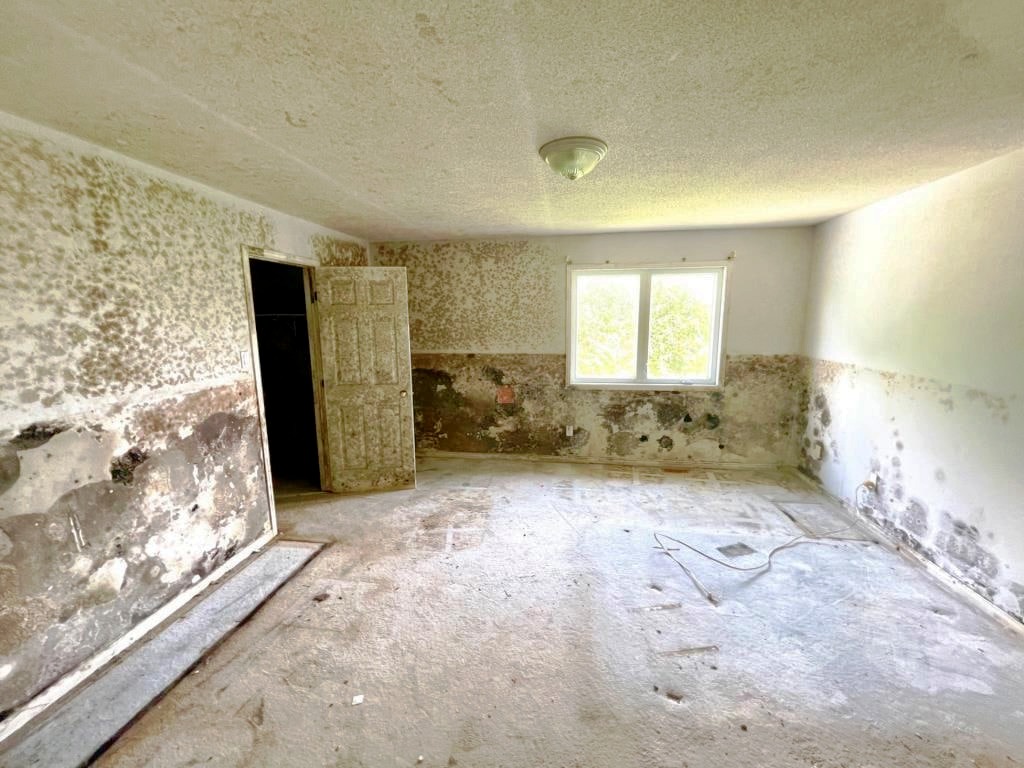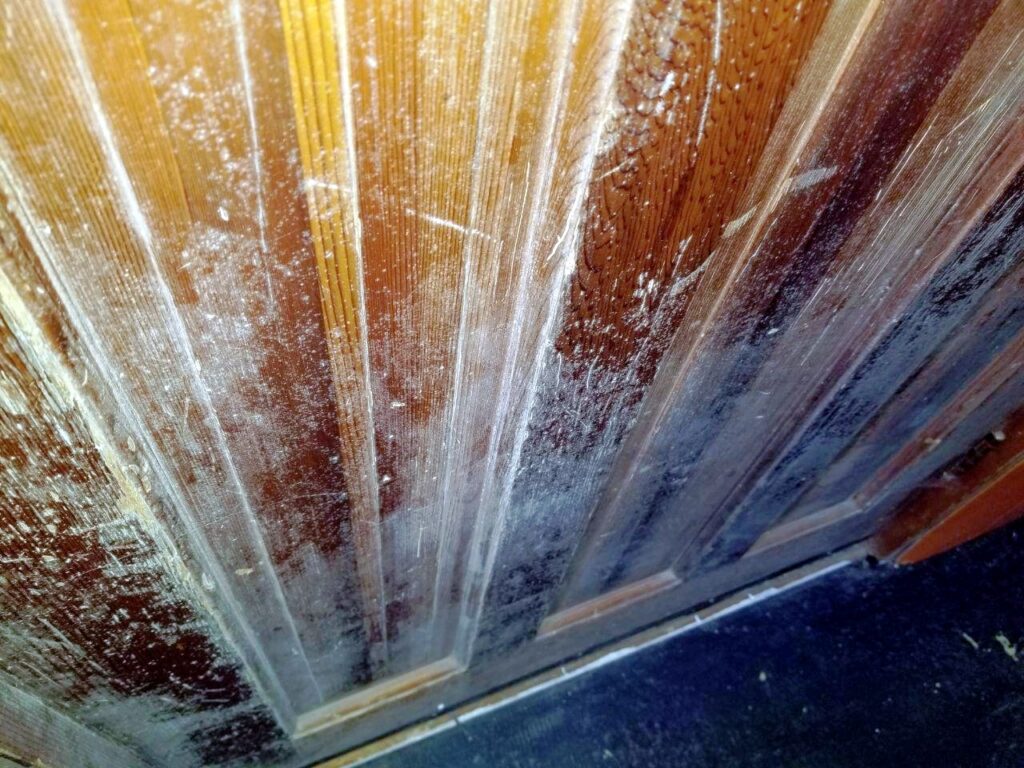Mold requires moisture, food (dirt, soil or any carbon-based household material like drywall or wallpaper) and the right temperature in order to grow.
If it’s humid indoors or if you’ve had leaks, flooding or water damage in your home, there is a high chance of mold developing. That’s why it’s a good idea to periodically inspect your home for possible mold growth and get to know some of the warning signs.

Signs of Mold in the Home
The following are ways you can watch out for household mold growth.
Observe any musty odors
Even if you’ve never lived in the presence of mold, you may have noticed a similar musty odor in old libraries or homes.
Keep your eyes peeled for signs of mold in your household
There’s not a single and specific appearance for mold. It can appear very thin or very slimy, and it can manifest itself in a variety of colors like white, black, gray, green and yellow. Typically, it will appear in patches of all sizes on porous household surfaces like walls, ceilings, carpets, furniture, books, shower tiles, grout and upholstery.
Check a hygrometer
Install a hygrometer inside your home, which can be found at your nearby hardware store and is sometimes called a relative humidity sensor. A hygrometer functions much like a thermometer, but rather than telling you the temperature, it measures the amount of relative humidity inside the home. If the hygrometer consistently shows above 55% relative humidity, you may already have a mold problem, since it spreads so quickly in humid conditions. Use a dehumidifier to maintain safe humidity levels in your home.
Examine Everything

Examine areas of your home that you normally wouldn’t think to look. Mold can grow for a prolonged period of time without anyone realizing it’s there. Make sure to check your attic, the basement and any sheds – because these areas often get overlooked.
Stay aware of how you’re feeling and whether you’re experiencing health symptoms associated with mold exposure. If you’re coming into contact with mold for long enough, it can lead to several issues, including respiratory infections, allergic reactions and more severe asthma attacks.
In some cases, you might not see a mold problem, or even smell one, but you’ll experience symptoms associated with mold exposure. If you’re experiencing symptoms and you suspect there’s mold in your home, have your air tested or call a mold removal professional immediately.
Where Does Mold Grow?
Mold is a type of fungi that can grow both indoors and outdoors. While mold is often found in damp, dark, or humid areas, it can also grow in dry areas. Mold spores are found in the air and can enter a home or building through windows, doors, vents, and HVAC systems. Once mold spores land on a wet or damp surface, they begin to grow.
The following are four places, and specific spots within each, that you should check out in your search for household mold.
1. Bathrooms
All mold, even black mold, thrive in dark, humid environments. Since bathrooms are constantly exposed to wetness (from showering, steam, leaky toilets and faucets, and other plumbing problems), they provide the ideal conditions for mold growth. Make sure to check around bathtubs, sinks, toilets and faucets for signs of mold growth. Also check the shower curtains and underneath rugs and bathroom mats.
2. Basements
Basements are another common area for house mold since they get little to no sunlight. Typically, basements are also poorly ventilated and prone to different types of moisture intrusion such as floods and leaks. Basements that have mold problems tend to give off a musty or earthy smell, so watch out for this. To prevent toxic mold from taking over your basement, you may want to consider getting it waterproofed or fixing any previous water damage.
3. Bedrooms

Mold can be a serious problem in any home, but it is especially problematic in bedrooms. This is because mold loves to grow in dark, damp places, and bedrooms are often both of those things. If you suspect that you have a mold problem in your bedroom, there are a few things you can do to confirm it and then get rid of the mold for good.
To start, take a close look at any visible mold growth. Mold can come in many different colors, including black, green, white, and brown. It can also have a fuzzy or slimy texture. If you see anything that looks like mold, it’s time to take action.
Next, try to identify the source of the moisture that’s causing the mold growth. This could be something as simple as a humidifier or an air conditioner that isn’t draining properly.
4. Closets
Have you ever taken out your winter coat from your closet after months of storage only to find out that it smells funny? If this sounds familiar, you can blame house mold. Closets are dark, humid environments that often get minimal air circulation and ventilation. Furthermore, if after a rainy day, you leave your coat in the closet without fully drying it, don’t be surprised at the stinky, moldy mess you find the next time you pull it out. If at all possible, keep a dehumidifier in your closets and air out your coats every now and again to reduce the likelihood of house mold.
5. Air conditioners
Mold is frequently found growing inside of air conditioning units, where it grows undisturbed, getting everything it needs: food, moisture, and the perfect temperature for growth. What’s worse, when the air conditioner is turned on, the mold can be circulated and dispersed into the air we breathe. As such, it is important that you regularly check your air conditioning units for mold. This is particularly true for older units that may be housing years of accumulated mold.
Conclusion
In conclusion, mold can grow just about anywhere there is moisture present. It is important to take care of mold as soon as it is found, as it can cause serious health problems. If you think you may have mold in your home, it is best to call a mold professional near you to come and take a look.
